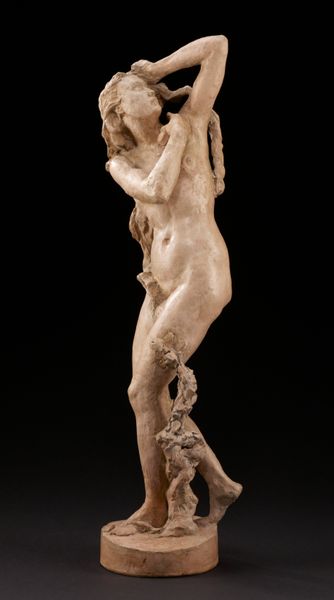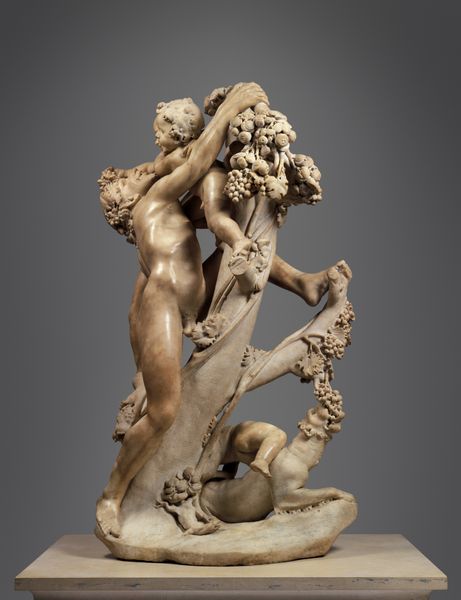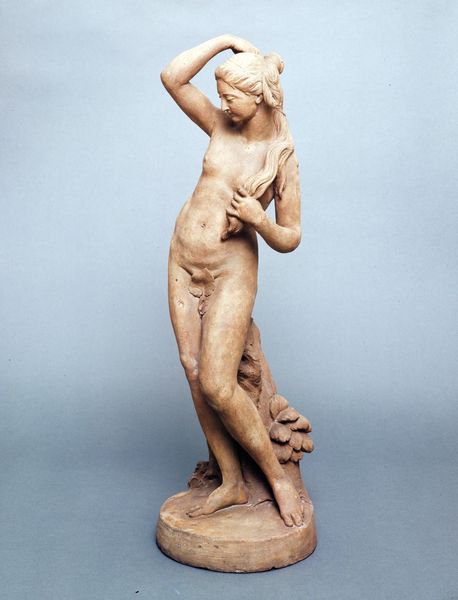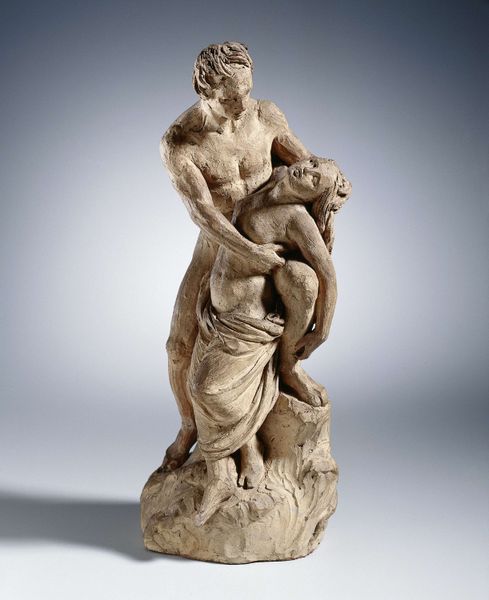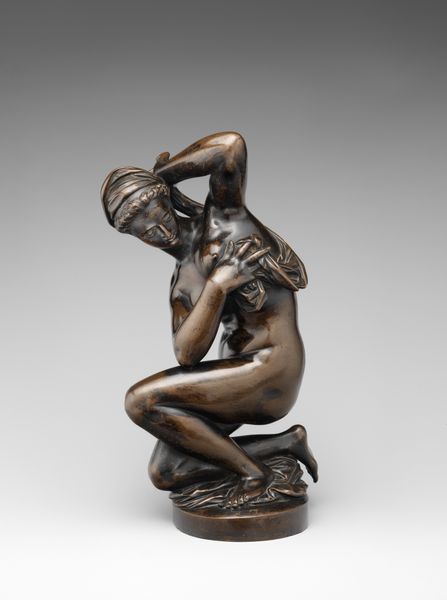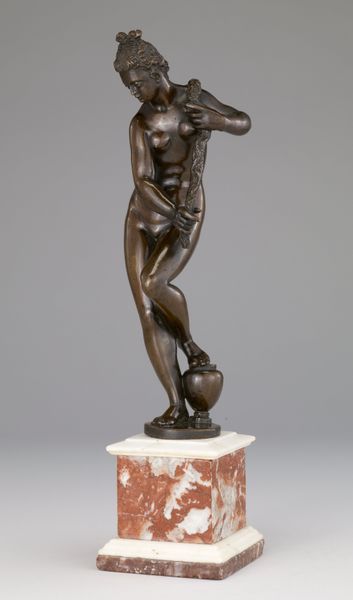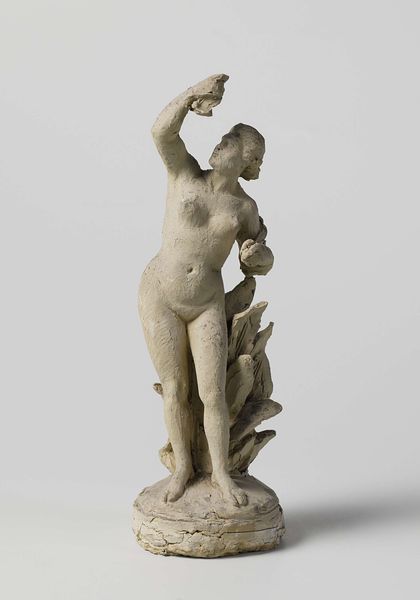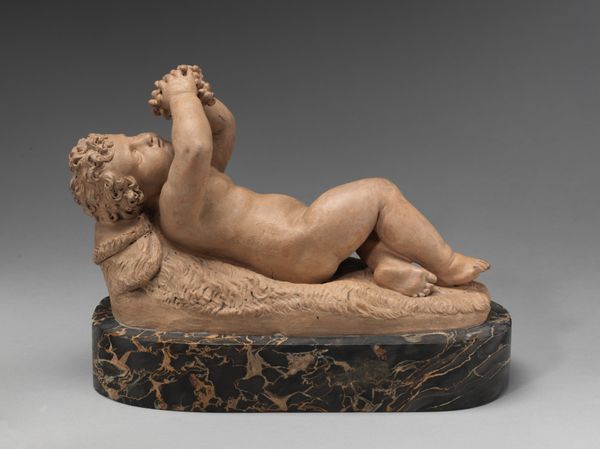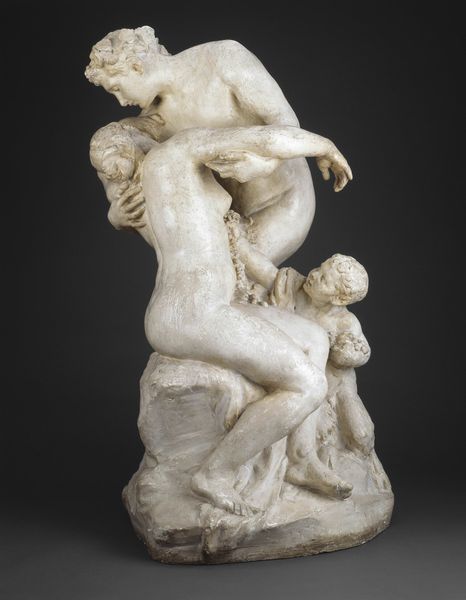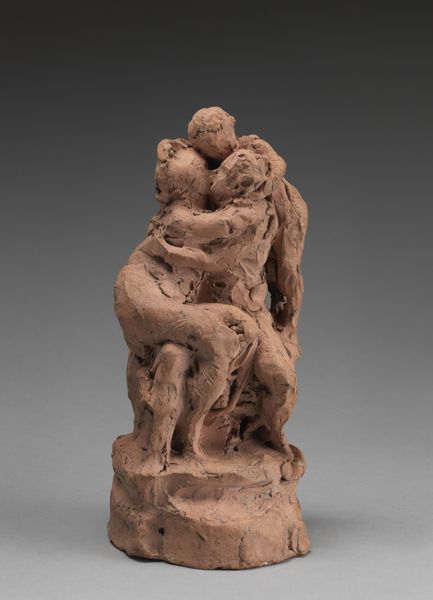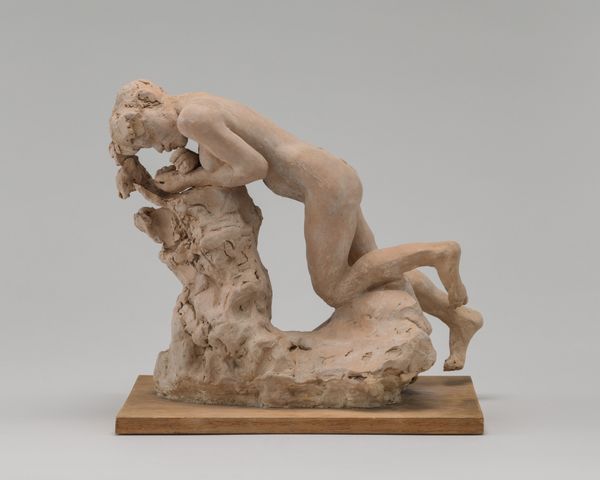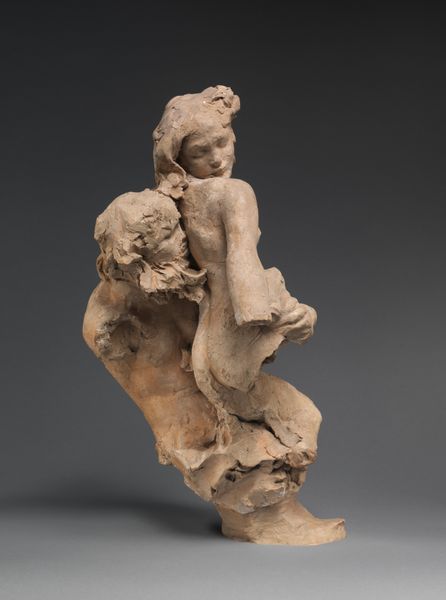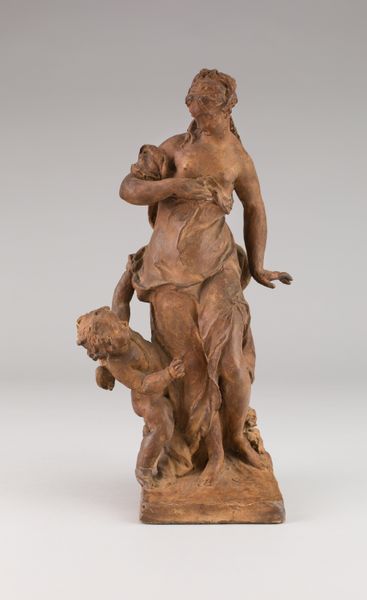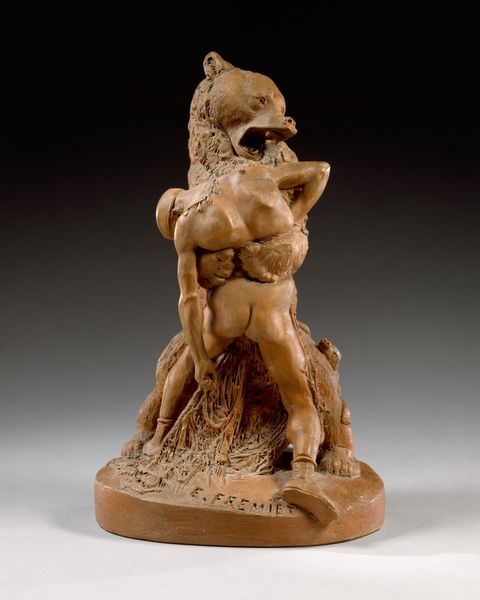
Copyright: Public Domain
Jean-Baptiste Carpeaux sculpted this terracotta figure, "Eve after the Fall," in France during the Second Empire. It's a fascinating example of how artists grappled with traditional religious subjects in a rapidly changing social landscape. Here, Eve isn't just a symbol of sin; she's a complex figure, burdened by the weight of her actions. Carpeaux uses the visual language of classical sculpture – the idealized form, the careful attention to anatomy – to create a sense of timelessness, yet the raw emotion in Eve's posture feels distinctly modern. To truly understand this sculpture, we can look to the artistic institutions of the time and to the way in which the story of the Fall was used to justify certain social structures. Was Carpeaux challenging those structures by humanizing Eve, or reinforcing them? Art history is a process of uncovering these layers of meaning, and the best way to do that is by looking at the artwork in the context of its own time.
Comments
No comments
Be the first to comment and join the conversation on the ultimate creative platform.
